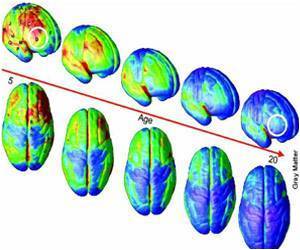Whitehead Institute researchers have created mouse models of two neurodegenerative diseases that are fatal in humans by directly manipulating a portion of the prion protein-coding gene.

"By altering single amino acid codons in the gene coding for the prion protein, in the natural context of the genome—no over expression or other artificial manipulations—we can produce completely different neurodegenerative diseases, each of which spontaneously generates an infectious prion agent," says Whitehead Member Susan Lindquist. "The work irrefutably establishes the prion hypothesis."
According to the prion hypothesis, prion proteins infect by passing along their misfolded shape in templated fashion, unlike viruses or bacteria, which depend on DNA or RNA to transmit their information. Certain changes to the prion protein (PrP) create a misshapen structure, which is replicated by contact. The misfolded proteins accumulate, creating clumps that are toxic to surrounding tissue.
PrP is expressed at high levels in the brain, and prion diseases, including Creutzfeldt-Jakob disease (CJD) in humans, bovine spongiform encephalopathy (BSE, or "mad cow disease") in cows, and scrapie in sheep, wreak havoc on the brain and other neural tissues. Some prion diseases, like BSE, can be transmitted from feed animals to humans.
The study of these highly unusual but devastating prion diseases has to date been thwarted by a lack of animal models that faithfully mimic the disease processes in humans. However, Walker Jackson, a former postdoctoral researcher in Lindquist's lab is changing that, creating novel mouse models of human fatal familial insomnia (FFI) and CJD. His research is reported online this week in the Proceedings of the National Academy of Sciences (PNAS).
To generate the models, Jackson created two mutated versions of the PrP-coding gene by changing a single codon—one of the three-nucleotide "words" in genes that code for the various amino acids in proteins. One mutation is known to cause FFI, while the other induces CJD. Unlike previous models that randomly inserted the mutations into the genome, occasionally increasing PrP expression, Jackson's models faithfully mimic the human disease—from as to disease onset, to PrP production, to infectiousness. In the brain, his FFI mice develop neuronal loss in the thalamus and his CJD mice experience spongiosis in the hippocampus and the cerebellum, reflecting the damage seen in the brains of human patients.
Advertisement
With the FFI and CJD models in hand, Jackson says he's excited to investigate how the pathology of these diseases develops.
Advertisement
Source-Eurekalert










